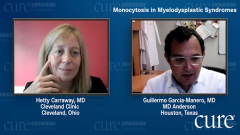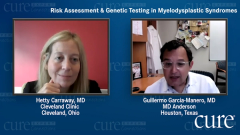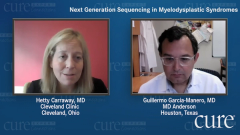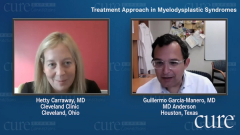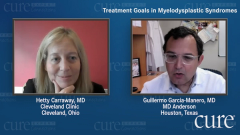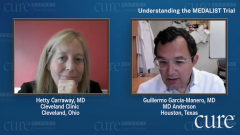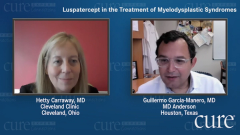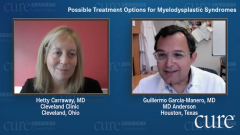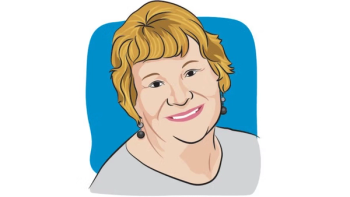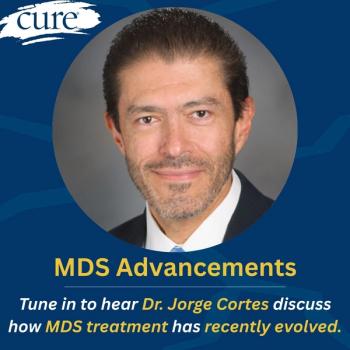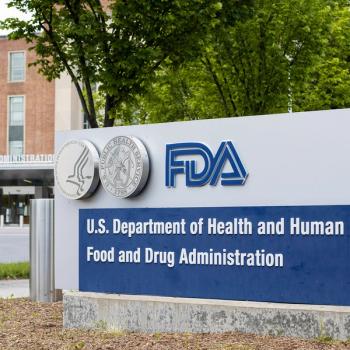
A Multidisciplinary Team in Treating Myelodysplastic Syndromes
Episodes in this series

Hetty Carraway, MD: I’d like to ask you a question about the multidisciplinary management of MDS [myelodysplastic syndrome]. What other members of the patient care team are involved, and what are their roles? For us at Cleveland Clinic, our core team includes some of the transfusion nurses and our pharmacists, who are part and parcel of the other issues in the drug-drug interactions. There are a number of people who are on our team who help care for patients. What is it like for you at The University of Texas MD Anderson Cancer Center in the management of your MDS patients?
Guillermo Garcia-Manero, MD: This is a fundamental question that we actually started on at the beginning of our conversation. Because our patients are older, they tend to have comorbidities. What we have learned through the work of many groups is that there might be some type of connection between these comorbidities and myelodysplastic syndrome. There might be a potential connection between heart disease and MDS and so forth, so this is being explored. This really emphasizes that we need to be able to provide multidisciplinary care.
I’m sure this is actually ordinary in a place like Cleveland Clinic, where you have not only top-notch leukemia doctors but also amazing cardiac care. We are a big cancer center, but this is a very important topic because this will probably translate into better outcomes. If we can integrate geriatric care for our very old patients or try to maximize the internal medicine needs of our patients, this is something we’ve been paying more attention to over the last couple of years. We used to disregard this, thinking that a diagnosis of MDS meant that we don’t have to worry much about your diabetes or high blood pressure. It turns out that it’s probably crucial. Having that kind of multidisciplinary care should be very important.
In our group, we are improving our integration of stem cell transplants. We’re starting to transplant older patients. Before, it was thought that if you were older than 50 years old, it was impossible. Then the threshold became 60. Now we’re starting to consider transplants in some patients over 70. Integrating the transplant team with the MDS leukemia team is really important. Earlier, you mentionedgenetic screening. Many of the centers have created leukemia programs where, for some patients with high-risk mutations, screening families is something that needs to be discussed.
It’s becoming a really complex multidisciplinary approach. From the typical group like you and me, you have nurses, physician assistants—the people who really provide the care. You also involve the transplant team, and in some cases, maybe hereditary clinics and geriatric internal medicine. This is really important. This kind of care is what will eventually translate into improved survival of our patients.
If it was in my family, this is what I would look for: clarity in terms of the diagnosis, a clinical trial that will help because we’re really far from curing a lot of our patients, and multidisciplinary care. Finally—I emphasized this at the beginning—the family support is critical. These are complex diseases. In older individuals, the conversation is difficult and having good family or friend support is really critical. Try to come to the clinic with another set of eyes and ears to help you and support you. I admire the families of our patients because without them, we would probably not be able to deliver a third of what we can. It’s critical to think about them as part of our team because they really are.
Hetty Carraway, MD: What I hear you saying is recapitulated at our practice as well. The team is extensive. It’s first and foremost the patients and the caregivers around that patient at the home front who really help ensure that all the information needed to be communicated is being communicated directly from the physician team. That’s inclusive of the nursing support that’s helping give chemotherapy and transfusions but also the cardiac management, drug-drug interactions from pharmacists, and just making sure there aren’t issues with the medications. We spoke about the future for some patients, including therapies such as transplant or even clinical trials. It is really important to ask questions so that you have the answers. Pursue that. Don’t be shy about asking questions and advocating for yourself or your loved one. More than ever, we want to encourage the MDS community. We are receptive to answering those questions, and we want you to be engaged and involved in as deep a way as possible in the management of MDS.
I think that we’ve been fortunate at our home institution to have the incorporation of genetic counselors and also the incorporation of the bone marrow transplant teams. That helps us really support patients who are able to pursue those types of therapies and answers with regard to the underlying pathogenesis of MDS.
I’m grateful for the time we’ve had today to talk about the management of patients with MDS. We’ve covered a lot of ground in the last hour and a half, and I can’t underscore how fortunate we are as doctors. I want to echo the comments of Dr. Garcia-Manero. We learn a lot and are very privileged to help take care of patients with this diagnosis. We’re humbled by the grace that you all show us in sharing a difficult time. We learn from you all how to remain open. We’re just delighted to help at a time in your life where you can lean on physicians and caregivers to help you at a time where there is some uncertainty. But we do want to leave the message that we are incredibly hopeful and excited about the state of affairs with the treatment options for patients with MDS, as well as the future.
Guillermo Garcia-Manero, MD: I would like to echo that to close, Hetty. It’s been an honor to spend this time with you. You’ve been a great colleague for so many years, so it’s nice to see you. I would also like to say that we are living through a transformative period of time. For many years, we had 2 or 3 drugs, so the best we could do was better diagnose this disease and try to do the best in our research. But now it’s starting to pay off, so I am optimistic.
This is a serious condition, but we’re going through a transformation, and things are moving fast. It’s thanks to the academic researchers, the families, and the patients who were part of all this. Luspatercept was one of the first things that happened in many years, but it shows how perseverance is going to help us achieve better therapeutics for our patients. Thank you, Hetty.
Hetty Carraway, MD: Great to see you.
Transcript Edited for Clarity


